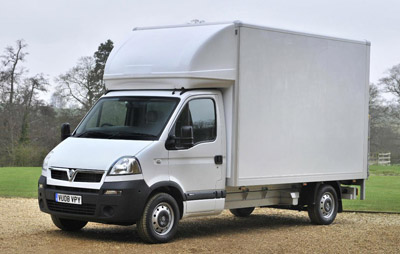Top tips for first time van drivers
But driving a van requires different skills from driving a car. So what’s the best advice for a first
time van driver? How do you ensure a car driver will be safe and confident driving a van?
As an employer or manager, you must make sure that anyone who drives a van on company business is up to the job and knows what to do. It’s also your duty of care. You owe it to them, yourself and other road users.
But it also makes sound business sense. You want your drivers to get the job done efficiently – without pranging the van, guzzling lots of diesel or hacking off other motorists in a vehicle emblazoned with your logo.
Dr Will Murray is research director at Interactive Driving Systems, which specialises in providing risk management solutions to fleets. He has seen an increase in the number of employees needing to trade up from driving a car to a bigger commercial vehicle or engineer’s van.
Leadership and supervision are vital to driver management, says Dr Murray – particularly when new, young and inexperienced colleagues are driving a larger vehicle than they’re used to.
It’s important to coach new van drivers on the differences between driving a car and driving a van, and here are Dr Murray’s to tips.
- Listen carefully to any advice and explanations when you collect your new van. Don’t forget the obvious – like fastening seat belts, adjusting your mirrors, head restraints and seats.
- Ensure the rear and side cargo doors are locked before each trip.
- Become familiar and comfortable with the size and responsiveness of the van in an area with little traffic.
- Be aware of the size and height of the vehicle, including the importance of taking extra caution when approaching bridges and canopies and when driving under overhanging trees.
- Remember that vans need extra room to turn corners, particularly due to the length of the vehicle and the position of the rear when manoeuvring.
- Make use of the increased visibility from the higher driving position and remember to use the exterior mirrors more often. You have no overshoulder vision at junctions – so don’t angle the van, you won’t be able to see.
- Take tight bends slowly because vans can tip more easily due to their height and increased centre of gravity.
- Control your speed and don’t follow other vehicles too closely. Larger vehicles require a much longer braking distance than cars, especially when carrying a load or in poor weather.
- Pay extra attention when you’re reversing or parking and ask someone sensible to guide you if you van has blind spots.
- Be especially careful when changing lanes and pay particular attention to two-wheelers and pedestrians.
- Understand the road-handling differences between the van when it is fully loaded and when it is empty.




Comments
Post a Comment